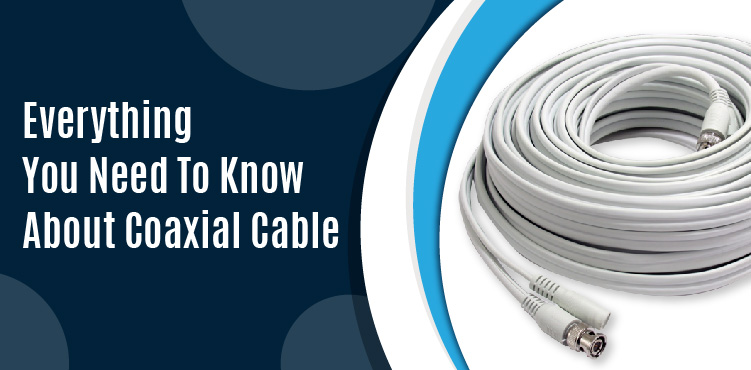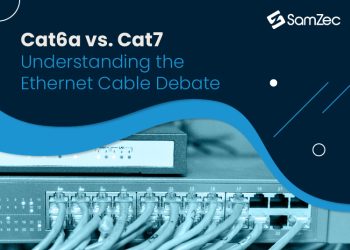Cabling is an indispensable part of the world we live in as cables are a reliable and safe source through which our data passes from one device to another. Among myriad types of cables, one is coaxial cable bulk, also known as coax. This cable is used in the networks. The credit to bring this awesome device into our lives goes to none other than Oliver Heaviside back then in 1880.
Being a conventional cable, coaxial cable bulk is still preferred as a network cable around the globe. As far as its components are concerned, it has a central core conductor. This core conductor is either made up of thin conducting wire or copper. To protect it from crosstalk and other sorts of interference, the conductor is wrapped in the insulating sheath. Diving deep into details, we find out that the insulating sheath consists of a dielectric conductor of metal foil. This foil, too, is wrapped in the insulating sheath which then covers the whole cable’s structure. Such thick coating provides top-notch protection against noise disturbances. Remember, noise disturbances take a toll on signal strength. When compared with fiber optic cables, coaxial cables weigh more. If you love etymology, you will be amazed to know the scientific reason behind the name. Both wire and the cylinders have the same axis, hence the wire is named coaxial.
Coaxial Cable Transmission Speed
As far as the transmission speed of the coaxial cable is concerned, it varies between 200 mln bits/second to over 500 mln bits/second. depending on the types and model of the cable. If you are wondering about the type of signal that coaxial cable carries, you need not worry anymore as we have got you covered. It carries radio frequency signals.
Coaxial Cable & RG
Coaxial cables, or simply coax cables, are identified by their RG numbers. The RG stands for Radio Government and represents a unique set of properties that align with specific types of coaxial cables. If the RG number is greater, it means the conducting core of the coaxial cable bulk is thinner. The most common types of coaxial cables available in the market these days are RG6, RG,11, and RG 56.
If you are mulling over to buy coaxial cable, go with RG6 as it has more bandwidth capacities. The most common use of RG6 cables is witnessed with television sets. You can connect this cable with your television set through a BNC connector or F-connector.
If you need a coaxial cable to transmit signals over long distances, then you should go with an RG-11 coaxial cable. It has a thick coating that provides top-notch protection against noise disturbances and keeps your signal safe. Another factor that influences the performance of the RG11 coaxial cable is the fact that how correctly you have connected the connector (or insert the cable into the connector).
The two types of coaxial cables are as follow:
- IEE 10BASE2, also known as Thinnet, is used for baseband transmission.
- IEE 10BASES, also known as Thicknet, is used in Ethernet networks.
Coax Applications
As stated above, mostly, coax cables are used in cable television and ethernet connections. You can also find their usage in the health sector and automobile sector. They are also used for transmitting huge amounts of data safely and promptly in the avionics sector. However, these cables are still vulnerable to dielectric loss and resistive loss; these losses are termed as attenuation in the cabling multiverse. Like all other cables, coax cables are not immune to attenuation.
Coaxial cable connectors
When you are done with buying coaxial cable, the next thing that you should worry about is finding the right type of connector. There are various connectors available including the male and female connectors. You can ask the merchant or the company to guide you through this phase.




















